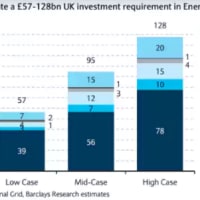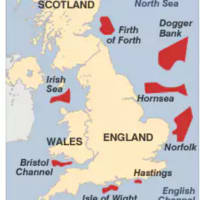The Next Pandemic: Not if, but When
(次のパンデミック:起こるか?ではなく、いつ起こる?)
By DAVID QUAMMEN, BOZEMAN, Mont.
NYT:May 9, 2013


(次のパンデミック:起こるか?ではなく、いつ起こる?)
By DAVID QUAMMEN, BOZEMAN, Mont.
NYT:May 9, 2013
TERRIBLE new forms of infectious disease make headlines, but not at the start. Every pandemic begins small. Early indicators can be subtle and ambiguous. When the Next Big One arrives, spreading across oceans and continents like the sweep of nightfall, causing illness and fear, killing thousands or maybe millions of people, it will be signaled first by quiet, puzzling reports from faraway places ― reports to which disease scientists and public health officials, but few of the rest of us, pay close attention. Such reports have been coming in recent months from two countries, China and Saudi Arabia.
恐ろしい新感染病が話題になっていますが、最初はそうではありませんでした。
パンデミックは小規模に始まるものです。
初期兆候は微妙かつ曖昧なことがあります。
ネクスト・ビッグ・ワンが発生し、夜の帳のように海や大陸に広がって、病と恐怖をもたらし、数千人、いや、数百万人の命を奪う時には、遥か彼方からの落ち着いた意味不明のニュースが最初の兆候となるでしょう。
そしてそのニュースに注目するのは、疾病専門家や公衆衛生当局者と、それ以外の一般人の内の僅か一握りだけなのです。
You may have seen the news about H7N9, a new strain of avian flu claiming victims in Shanghai and other Chinese locales. Influenzas always draw notice, and always deserve it, because of their great potential to catch hold, spread fast, circle the world and kill lots of people. But even if you've been tracking that bird-flu story, you may not have noticed the little items about a "novel coronavirus" on the Arabian Peninsula.
H7N9型という、上海や中国の田舎で犠牲者を出した新型鳥インフルエンザについてのニュースは、ご覧になったかもしれません。
インフルエンザは常に注目されますし、というのも、インフルエンザが本格化し、急速に広がり、世界中で流行して、沢山の人々を殺す可能性は高いのですから、常に注目に値するのです。
しかし、貴方が鳥インフルエンザ報道を追跡していても、アラビア半島で発生した「新型コロナ・ウイルス」に関する小記事は見逃したかもしれません。
This came into view last September, when the Saudi Ministry of Health announced that such a virus ― new to science and medicine ― had been detected in three patients, two of whom had already died. By the end of the year, a total of nine cases had been confirmed, with five fatalities. As of Thursday, there have been 18 deaths, 33 cases total, including one patient now hospitalized in France after a trip to the United Arab Emirates. Those numbers are tiny by the standards of global pandemics, but here's one that's huge: the case fatality rate is 55 percent. The thing seems to be almost as lethal as Ebola.
これが注目されたのは昨年9月のことで、サウジアラビア保健省は、そのような(科学的にも医学的にも新種の)ウイルスが3人の患者から検出され、そのうちの2人は既に死亡した、と発表しました。
年末までに、9人の感染が確認され、5人が死亡しました。
木曜日の時点では、感染者数は33人、死亡者数は18人です。
患者の1人はUAEを訪れた後にフランスで入院しています。
世界的パンデミックの基準からすれば僅かですが、死亡率は著しく高い55%です。
これはエボラ・ウイルスほど猛毒のように思われます。
Coronaviruses are a genus of bugs that cause respiratory and gastrointestinal infections, sometimes mild and sometimes fierce, in humans, other mammals and birds. They became infamous by association in 2003 because the agent for severe acute respiratory syndrome, or SARS, is a coronavirus. That one emerged suddenly in southern China, passed from person to person and from Guangzhou to Hong Kong, then went swiftly onward by airplane to Toronto, Singapore and elsewhere. Eventually it sickened about 8,000 people, of whom nearly 10 percent died. If not for fast scientific work to identify the virus and rigorous public health measures to contain it, the total case count and death toll could have been much higher.
コロナ・ウイルスは細菌で、人などの哺乳類や鳥類に感染し、症状の程度は軽度から重度まで様々な炎症を、呼吸器官と消化器官に生じます。
SARSの病原体がコロナ・ウイルスであることから、このウイルスは2003年に有名になりました。
これは中国南部で突然出現し、広州から香港までヒト・ヒト感染し、飛行機でスピーディーにトロント、シンガポールなどに運ばれました。
最終的には8,000人が感染し、そのうちの10%近くが死亡しました。
ウイルスを特定するための迅速な科学的努力と、これを封じ込めるための厳しい公衆衛生対策がなければ、感染者数と死亡者数は遥かに多かったことでしょう。
One authority at the Centers for Disease Control and Prevention, an expert on nasty viruses, told me that the SARS outbreak was the scariest such episode he'd ever seen. That cautionary experience is one reason this novel coronavirus in the Middle East has attracted such concern.
米国疾病管理予防センター(CDC)の悪質なウイルスを専門とする某高官は私に、SARSのアウトブレークは自分が出会った中でも最も恐ろしい事件だったと語りました。
その教訓こそが、中東の新型コロナ・ウイルスがこれほどの注意を惹きつけている理由の一つです。
Another reason is that coronaviruses as a group are very changeable, very protean, because of their high rates of mutation and their proclivity for recombination: when the viruses replicate, their genetic material is continually being inaccurately copied ― and when two virus strains infect a single host cell, it is often intermixed. Such rich genetic variation gives them what one expert has called an "intrinsic evolvability," a capacity to adapt quickly to new circumstances within new hosts.
もう一つの理由は、コロナ・ウイルスはグループとして非常に変化し易く、非常に多様に変化することですが、これは変異や組み換え傾向が高いことが原因です。
ウイルスは複製する際に、遺伝子物質は常に不正確にコピーされます。
また、2つ異なる型のウイルスが同じ宿主の細胞に感染する際に混合することもよくあります。
そのように多様な遺伝子バリエーションが、これらのウイルスに或る専門家が「本質的進化能力」と呼んでいるものを与えます。
つまり、新しい宿主の中で新しい状況に素早く対応する能力です。
But hold on. I said that the SARS virus "emerged" in southern China, and that raises the question: emerged from where? Every new disease outbreak starts as a mystery, and among the first things to be solved is the question of source.
しかしちょっと待って下さい。
私はSARSウイルスは中国南部で「出現」したと言いましたが、そこから次の疑問が生じます。
どこから出現したのでしょうか?
新しい病気のアウトブレークは常に謎として始まりますし、先ず解決されるべきことの一つは、出現元の問題です。
In most cases, the answer is wildlife. Sixty percent of our infectious diseases fall within this category, caused by viruses or other microbes known as zoonoses. A zoonosis is an animal infection transmissible to humans. Another bit of special lingo: reservoir host. That's the animal species in which the zoonotic bug resides endemically, inconspicuously, over time. Some unsuspecting person comes in contact with an infected monkey, ape, rodent or wild goose ― or maybe just with a domestic duck that has fed around the same pond as the wild goose ― and a virus achieves transcendence, passing from one species of host into another. The disease experts call that event a spillover.
殆どのケースにおいて、その答えは野生生物です。
感染症の60%はこのカテゴリーに含まれ、人獣共通感染症として知られ、ウイルスまたは微生物が原因です。
人獣共通感染症は人に感染する動物の感染症です。
もう一つ専門用語がありますが、それは保菌宿主です。
人獣共通感染症の菌が固有に、ひっそりと住み着いている動物種のことです。
それと知らない人が感染したサル、チンパンジー、ネズミ、または野生のガチョウに接触し(もしくは野生のガチョウと同じ池の周辺で餌を与えている家禽に過ぎないかもしれませんが)、ウイルスは別の宿主に移ることが出来ます。
専門家はこれをスピルオーバー(溢出)と呼んでいます。
Researchers have established that the SARS virus emerged from a bat. The virus may have passed through an intermediate species ― another animal, perhaps infected by cage-to-cage contact in one of the crowded live-animal markets of the region ― before getting into a person. And while SARS hasn't recurred, we can assume that the virus still abides in southern China within its reservoir hosts: one or more kinds of bat.
専門家は、SARSウイルスはコウモリから出現したことを突き止めました。
このウイルスは人に感染する前に、媒介種を経由して(恐らく生きた動物を扱う地方の市場で、檻一杯に詰め込まれた動物間で感染した別の動物)感染したのかもしれません。
また、SARSは再び現れていませんが、このウイルスが中国南部で保菌宿主(一種または複数の種類のコウモリ)に今も住んでいると想定することは可能です。
Bats, though wondrous and necessary animals, do seem to be disproportionately implicated as reservoir hosts of new zoonotic viruses: Marburg, Hendra, Nipah, Menangle and others. Bats gather in huge, sociable aggregations and have long life spans, circumstances that may be especially hospitable to viruses. And they fly. Traveling nightly to feed, shifting occasionally from one communal roost to another, they carry their infections widely and spread them to one another.
コウモリは驚くべき動物であり必要な動物ですが、確かに、新しい人獣共通感染症ウイルス(マールブルグ菌、ヘンドラ菌、ニパ菌、メナングル菌など)の保菌宿主として、不釣合いに関与しているようです。
コウモリは大型で社交的な集団を作り、寿命が長く、ウイルスにとって特に都合が良いと思われれる状況にあります。
また、コウモリは飛びます。
餌をとるために夜間に飛行して、時に一つの集団から別の集団へと移動して、ウイルスを広範に運び、広げます。
As for the novel coronavirus in Saudi Arabia, its reservoir host is still undiscovered. But you can be confident that scientific sleuths are on the case and that they will look closely at Arabian bats, including those that visit the productive date-palm groves at the oases of Al Ahsa, near the Persian Gulf.
サウジアラビアの新型コロナ・ウイルスの場合、保菌宿主はまだ特定されていません。
しかし、科学的捜索が行われており、ペルシャ湾に近いアルアシャのオアシスにあるナツメヤシの林を訪れるものなど、アラビア半島のコウモリに注目していることは確実でしょう。
What can we do? The first obligation is informed awareness. Early reports arrive from afar, seeming exotic and peripheral, but don't be fooled. One emergent virus, sooner or later, will be the Next Big One. It may show up first in China, in Congo or Bangladesh, or maybe on the Arabian Peninsula; but it will globalize. Most people on earth nowadays live within 24 hours' travel time of Saudi Arabia. And in October, when millions of people journey to Mecca for the hajj, the Muslim pilgrimage, the lines of connections among humans everywhere will be that much shorter.
我々に何が出来るでしょう?
最初の義務は、情報に基づいて注意することです。
遠くの地から発信される初期のニュースは、珍しい外国の話のようですが、騙されてはいけません。
出現したウイルスは、いずれネクト・ビッグ・ワンになるのですから。
最初に現れるのは中国、コンゴ、バングラデシュ、アラビア半島かもしれませんが、世界中に広がります。
地球上にいる殆どの人々は今や、24時間以内にサウジアラビアに行ける距離に住んでいます。
また、10月には、数百万人が巡礼のためにメッカへ向かい、世界各地にいる人々の距離は一気に縮まります。
We can't detach ourselves from emerging pathogens either by distance or lack of interest. The planet is too small. We're like the light heavyweight boxer Billy Conn, stepping into the ring with Joe Louis in 1946: we can run, but we can't hide.
我々は距離や無関心で、出現する病原菌と無関係でいることは出来ないのです。
地球は余りにも小さいのです。
我々に逃げることは出来ますが、隠れることは出来ないのです。
David Quammen, a contributing writer for National Geographic, is the author, most recently, of "Spillover: Animal Infections and the Next Human Pandemic."




















